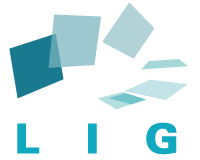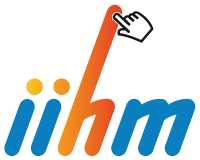Master project: Effects of Transfer in Human pointing performance
*** Description
Lying in bed, homo sapiens technologicus starts his day checking his emails on the 10x5cm screen of his smart phone. He then gets his coffee while reading the news on the 20x15cm screen of his tablet computer. Later in the day, he may buy a train ticket, standing up in front of the 20x30cm touch-screen of the ticket machine at the station. Seating in the train, he would then use the 7x4cm trackpad of his laptop. At the office, he would use a mouse on his computer desktop and sometime would even use different screens of different sizes and different resolutions, with the same or with different input devices. In a close future he would probably use large touch-surfaces such as 120x80cm interactive tables. Depending on the task, in a same day, homo sapiens technologicus will switch between screens of very different sizes and resolutions. He will interact with them through direct and indirect finger pointing gesture, in different position and toward different targets with different sizes.
This short scenario points to a fundamental issue in movement sciences and motor control researches usually referred to as “transfer”. “Transfer” refers to the fact that training on one kind of movement can affect (to a more or less extend) subsequent movements. Transfer can improve (“positive” transfer) or hinder (“negative” transfer) the subsequent movements, and is known to depend on the similarity between movements [1-2].
The global aim of this project is to explore how the study of transfer of motor adaptation, largely explored in human movement sciences could help designers in HCI to optimize multi-surfaces interactions. The first step of the project will be to develop an experimental protocol in order to explore and quantify the effect of transfer on pointing performance from a small to a large surface and reverse. This experimental protocol will be inspired from previous works published in the motor control literature. Pointing performance will be measured using the traditional Fitts’ experimental paradigm [3]. Surfaces of different sizes will be simulated on the same interactive table available at LIG. Finger motions will be tracked using an Optitrack. We will address the following questions: does the pointing precision required on a small surface influences subsequent precision on a large surface, and conversely? What is the cost (or gain) of shifting from one surface to the other in term of user’s performances? Does, and how, a new pointing skill acquired on one surface transfers to another surface? These questions will be addressed for both direct touch and indirect touch (i.e. using a trackpad or similar device).
In a second step, we will study the possibilities to improve positive transfer and to reduce negative transfer by controlling some parameters of the interactive system, such as target size and the control/display gain in indirect pointing.
***Skills
Programming
***References
[1] Krakauer JW, Mazzoni P, Ghazizadeh A, Ravindran R, Shadmehr R. Generalization of motor learning depends on the history of prior action. PLoS Biol 4: e316, 2006.
[2] Mattar AAG, Ostry DJ (2010) Generalization of dynamics learning across changes in movement amplitude. J Neurophysiol 104:426-438.
[3] Fitts, P. M. (1954). The information capacity of the human motor system in controlling the amplitude of movement. Journal of Experimental Psychology 47, 6, 381–391.

